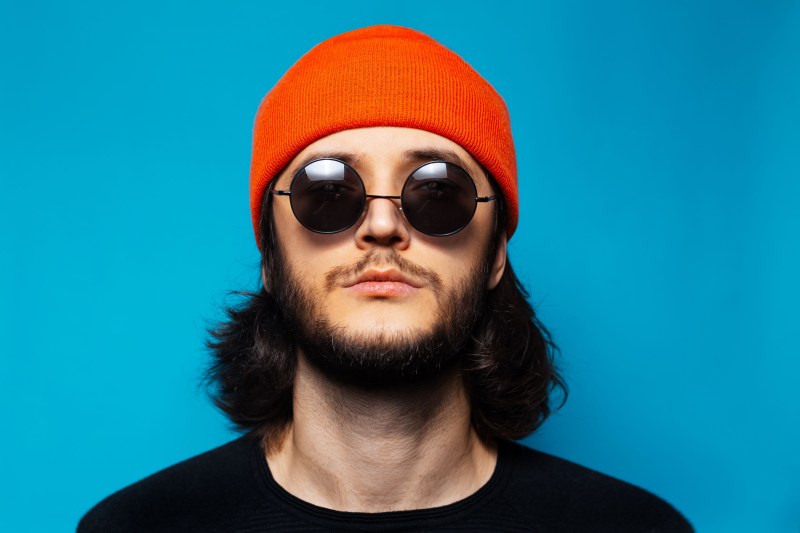Describe some different men’s hairstyles to draw a reaction, and you’ll almost certainly get a wide range of comments. But the wildest ones will almost certainly come when you mention the mullet, which has a history of pushing most people to either end of the “love it or hate it” continuum.
My personal reaction isn’t all that extreme, though. My hairline went into a full-blown retreat early on, and when it happened the last thing I wanted to do was emphasize that. As a social phenomenon, though, the mullet is incredibly fascinating, so let’s go down some hairstyle rabbit holes that inevitably pop up when exploring the mullet.
The mullet is making a comeback

While most of us are least somewhat aware of the mullet’s recent decade-by-decade history, Jeffery Brock has a different perspective on its evolution. He’s a barber and hair stylist who goes by “Drizzy” and he’s the founder and owner of DrizzyxStudios and the St. Louis Barber Shop Studio. His take is that the mullet is currently in one of its “comeback” phases.
“I truly love the mullet a lot,” he says. “The mullet has transformed over the years from what it used to be. The old mullet was a style where is was very short, almost buzzed up top, and very long in the back. Some guys even have a brush back mullet that’s longer up top and longer in the back.”
The mullet actually has a (mostly) illustrious history

Brock has some intriguing thoughts about today’s stylistic variations, but before we get to those, let’s jump into the wayback machine and do a deeper dive.
It comes with a lot of revelations. Believe it or not, the original mullet was described by none other than Homer in The Iliad, when he wrote that it was worn by warriors with “their forelocks cropped, hair grown at the back” in his timeless tale.
That warrior aspect of the mullet was also adopted by multiple Native American tribes that often wore their hair in a similar fashion. Later on, the mullet took on an air of authority that was a symbol of power during both the Byzantine Empire and in 17th century Europe. To get an idea of how that looked, think of the powdered wigs that are still a part of the British legislative process in the Crown Court.
The mullet’s goofy phase

The mullet took a very different turn when it surfaced in the US in the second half of the 20th century. Rockers like David Bowie first popularized the mullet in the early 70s, and his version was actually considered edgy back then.
Then came the goofy years. In sports, we’re talking about guys like John Daly and Andre Agassi. Actors like Patrick Swayze made it a thing, too, and musically the Beastie Boys mocked the mullet in an especially memorable mid-90s song.
After that the mullet became something of a rural (i.e., “redneck”) phenomenon. This was also when the timeless phrase “business in the front, party in the back” was coined to describe the mullet’s, um, unique appeal.
The modern mullet

The hairstyle’s 21st century revival was originally led by the likes of Rihanna and Lil Nas X began mulleting. Now barbers like Brock are adding new styles that are being adopted by different age groups.
“I typically get a lot of mullets, but different age groups wear specific mullets,” Brock says. “The younger age group from 17-25 wears the mullet that’s short with a textured crop on top. We call that the “Crullet.” The age range from 25-35 wears more of a brushback mullet. Something a tad bit longer on top that could be styled back.”
Drizzy also has some interesting thoughts about the mullet’s ongoing appeal.
“I think what draws people to the mullet is that it’s different but more stylish and modern now,” he explains. “It’s more acceptable in a lot of workplaces.”
Mullet styling

The styling elements are actually part of what’s driving that acceptability. Barbers like Brock are taking on the challenge of updating the mullet, and they’re using specific products and approaches to do it.
“The maintenance for a mullet would be to keep it moisturized because the hair is longer, especially in the back,” he explains. “I’ve seen brushbacks, curly mullets, and the textured ‘Crullet.’ Typically, it will always depend on the style and texture of the hair.”
Drizzy even created his own collection of products to help style the mullets his clients want. They include a definition spray to enhance the texture and grittiness of the hair, along with a beard oil, a curl cream and gel. The overall idea is to add moisture to the curls while enhancing them, then using the gel to give the curls hold along with a semi-matte finish.
“If a client doesn’t like his mullet, we can always find other great alternative hairstyles that will complement their face and head shape, along with their lifestyle,” Brock summarizes.
Is the mullet right for you?

This is one of many fun questions about today’s mullet. If you want an old-school mullet that leans toward goofy, then sure, it’s definitely a solid choice, almost regardless of how you look.
Stylistically, though, the mullet tends to work best for those with round- or oval-shaped faces. It can addd length if your face is round, and it can also soften the jawline. And as Drizzy indicates, you can choose from a fairly wide array of stylistic touches to make your mullet uniquely personal.
“The only way I could see the mullet going away is if it’s shamed and banned from a lot of places,” he says. “Then people would be embarrassed to wear it and forced to cut it. But the new modern mullets are more stylish and come in different variations.”



